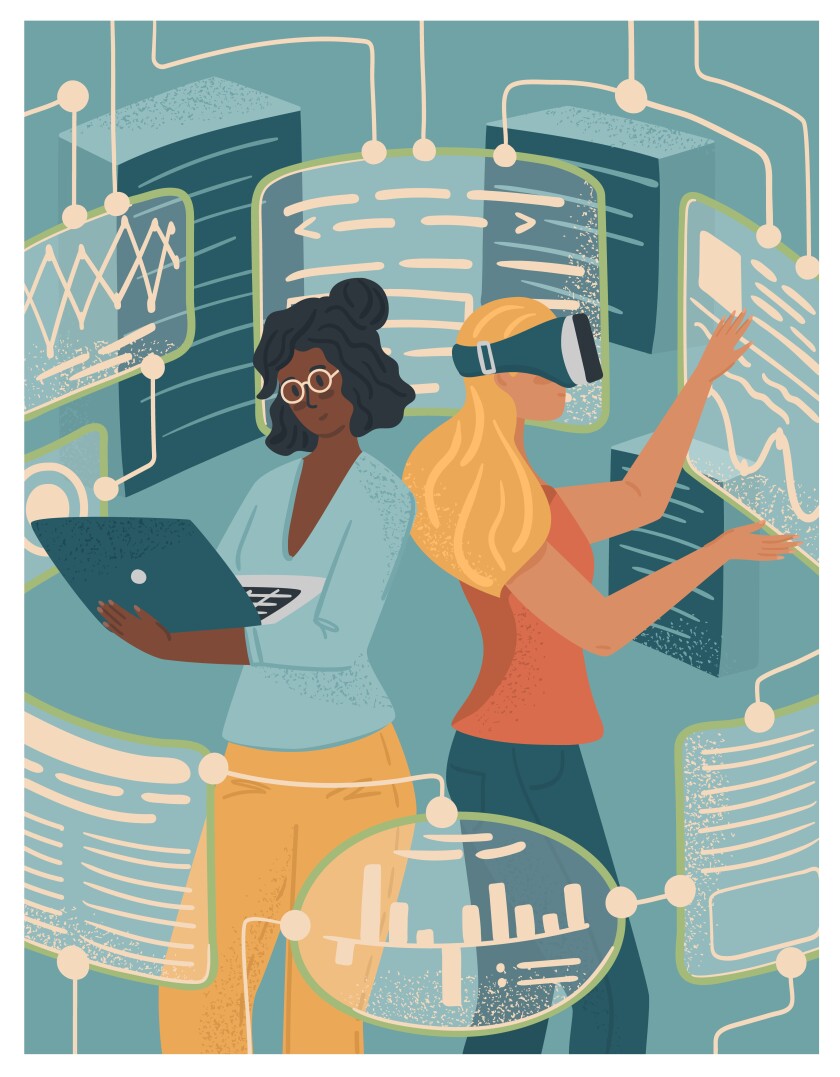Breaking Down AI:
The Terms Behind the Tech
With emerging technologies come new ways of learning and thinking, along with the power and the potential to shape society through noteworthy advances. With such rapid development, it can be hard to keep up with certain aspects of the field – even when it comes to common terminology. With lots of new acronyms being thrown around, it’s easy to feel as though innovative companies are constantly coming out of the woodwork with a brand new buzzword to put in the mix, leaving others to simply nod and smile.
Of them all, AI is probably one of the most popular abbreviations right now, but what does it mean? Of course, not everyone is an AI aficionado – that’s why companies like us exist! But, whether you’re sourcing technology to improve efficiency and cut costs for your company or shopping your personal recommendations on Amazon, AI is fast becoming one acronym that’s essential to understand.
At omni:us, we’re aware of the need for AI in workflows in order to attain a higher level of efficiency, and to eliminate any unnecessary/time-consuming ways of working. Our intelligent technology deals with policy processing; automated documentation for the professional services, so companies can redirect valuable human effort and resources completing necessary but time-consuming tasks like paperwork, or claims, toward the strategic and skilled work that drives their business.
We know our audience aren’t traditional tech seekers – in some cases, they’ve just started digitizing aspects of their services, and in others, our technology is a first foray into the world of automated innovation. Regardless of the case, we want our business solution to be as clear and relatable as possible. That’s why we’ve put together a one-stop guide to AI, to help simplify the understanding of the technology we specialize in for the benefit of all:
Artificial Intelligence
Describes computer systems or machines that are capable of completing tasks typically requiring human cognition – problem-solving, image and speech recognition, etc. At omni:us, we use artificial intelligence to classify, categorize, semantically understand and extract useful data from arbitrary documents by recognizing and understanding text, whether typed or handwritten. omni:us also understands the meaning and definition of specific words, for example, whether the word ‘baker’ or ‘manager’ is a profession, a name or another piece of key information on a claim form. The semantic understanding our technology provides means it’s leagues beyond basic optical character recognition.
Machine Learning
The art of giving computers the ability to learn from data and function independently of human control. Based on our own learning processes, the idea is that from incoming data, systems can “learn” independent of human intervention – by example, not by rules. Radical technology, like the solutions we offer at omni:us, are ‘trained’ using millions of pages, and constantly improve on their intelligence – just like toddlers as they grow.
Neural Networks
Inspired by their organic namesakes – human brains’ building blocks for cognition – these artificial networks are the foundation that enables independent machine learning, and allows machines to “understand” incoming data.
Semantic Technology
Technology that can recognize and understand the meaning of the text it reads. Based our own learning processes, the idea is that from incoming data, systems can “learn” independent of human intervention – by example, not by rules. For instance, a toddler learning animals will cultivate a pretty strong grasp of what a cat is when shown various animals and told which are “cat” or “not cat,” rather than learning cat-criteria, like a tail, pointed ears, and whiskers. This puts omni:us’ solutions one step ahead of simple optical document classification – technology that converts different types of documents or images captured by a digital camera into editable and searchable data. Our technology is smarter, and instantaneously reads and fully understands pertinent information from various policy and claims documents to relay in an instant back to the service provider.
Intelligent Automation
Any business process that’s automated through artificial intelligence, to keep companies improving, progressing, and working smarter. In other words, you’ve learned what we are, but what could your company become with us?
AIaaS
The third party offering of artificial intelligence outsourcing. AI as a service allows individuals and companies to experiment with AI for various purposes without large initial investment and with lower risk.
Machine-to-Machine (M2M) communication
A form of data communication that involves one or more entities that do not necessarily require human interaction or intervention in the process of communication.
Acronyms and definitions aside, there’s no doubt that AI is transforming businesses and with such unprecedented change comes massive opportunity. AI will create undiscovered roles and jobs in new sectors and will redeploy people to higher value work. New innovations also expose the potential to improve people’s quality of work/life balance, reducing the number of hours spent at our desks and making working hours much more flexible. In the long run, sectors like retail, marketing, and education will also continue to benefit dramatically from AI technology, which in some cases is being developed faster than it can be implemented.
____________________________________________________________________
Interested in more? Read here to learn how ML was used in the Vatican to digitize the past, and here to learn about the AI models used by omni:us.
Image credits: Wenjie Dong/iStock, anyaberkut/iStock
Blog

